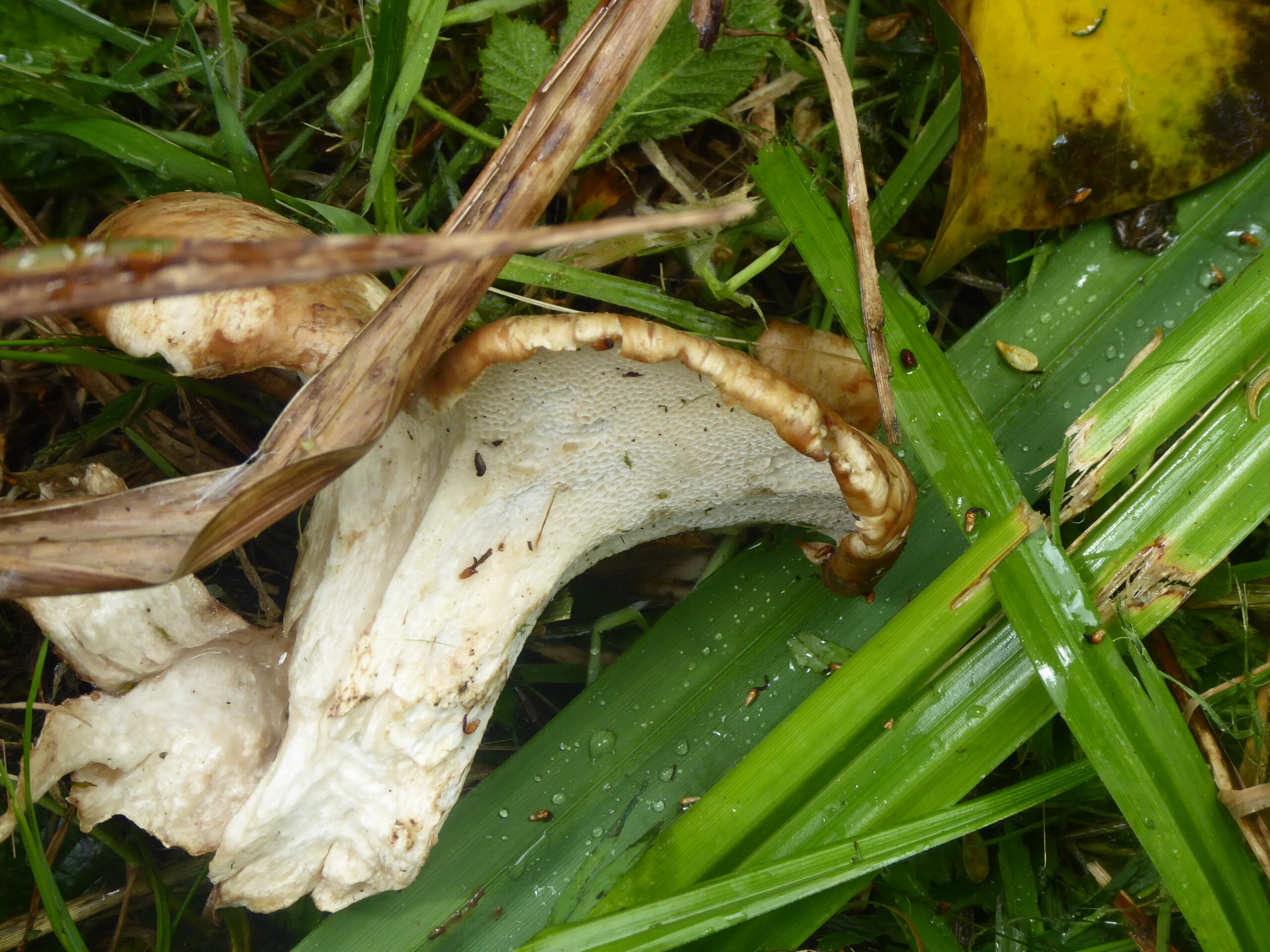The first thing you notice about this toadstool is that it has pores instead of gills on the underside. It is white with a brown scaley top in a concave shape, and a funnel-shaped stem. I spotted this on the steps under the sea buckthorn where there is a mix of stone and log surfaces. There was a large brown toadstool in this spot last summer, but I didn’t get to see the stem and underside before it decomposed, so I couldn’t identify it. I thought it was a funny time of year for fungi, as I usually expect to see them in the autumn, but this one can be found from May to October. The cap becomes more funnel-shaped with age and can become slimy, as happened with the last one, which had debris stuck to it, which made identification even harder. It is said to be edible with a mild mushroomy flavour!
-
Crust fungus
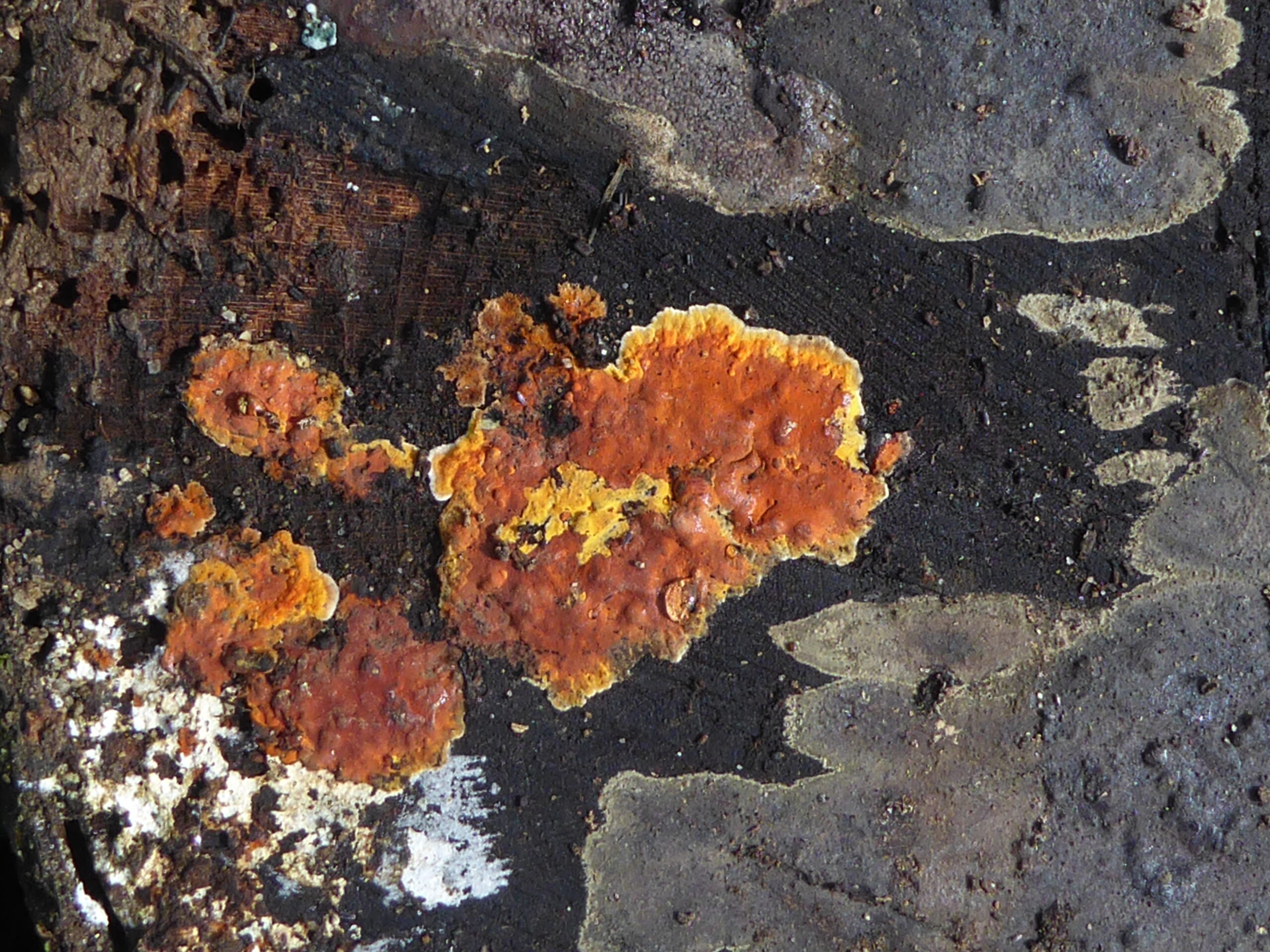
This was growing on the cut surface of a sycamore log. It has been difficult to identify, using Google Lens and the Collins Guide. The most likely is the wrinkled crust fungus (Phlebia radiata). This one doesn’t look very wrinkled from the photo but is warty enough and orange. Or white rot fungus (Phanerochaete chyrsorhizon) as there is obvious white rot next to it. White rot fungus has the ability to break down pesticides and plastics. The white is cellulose that they leave behind after they have digested wood. I really like the bright pattern of the fungus on the log.
-
King Alfred’s Cakes (Daldinia concentrica)
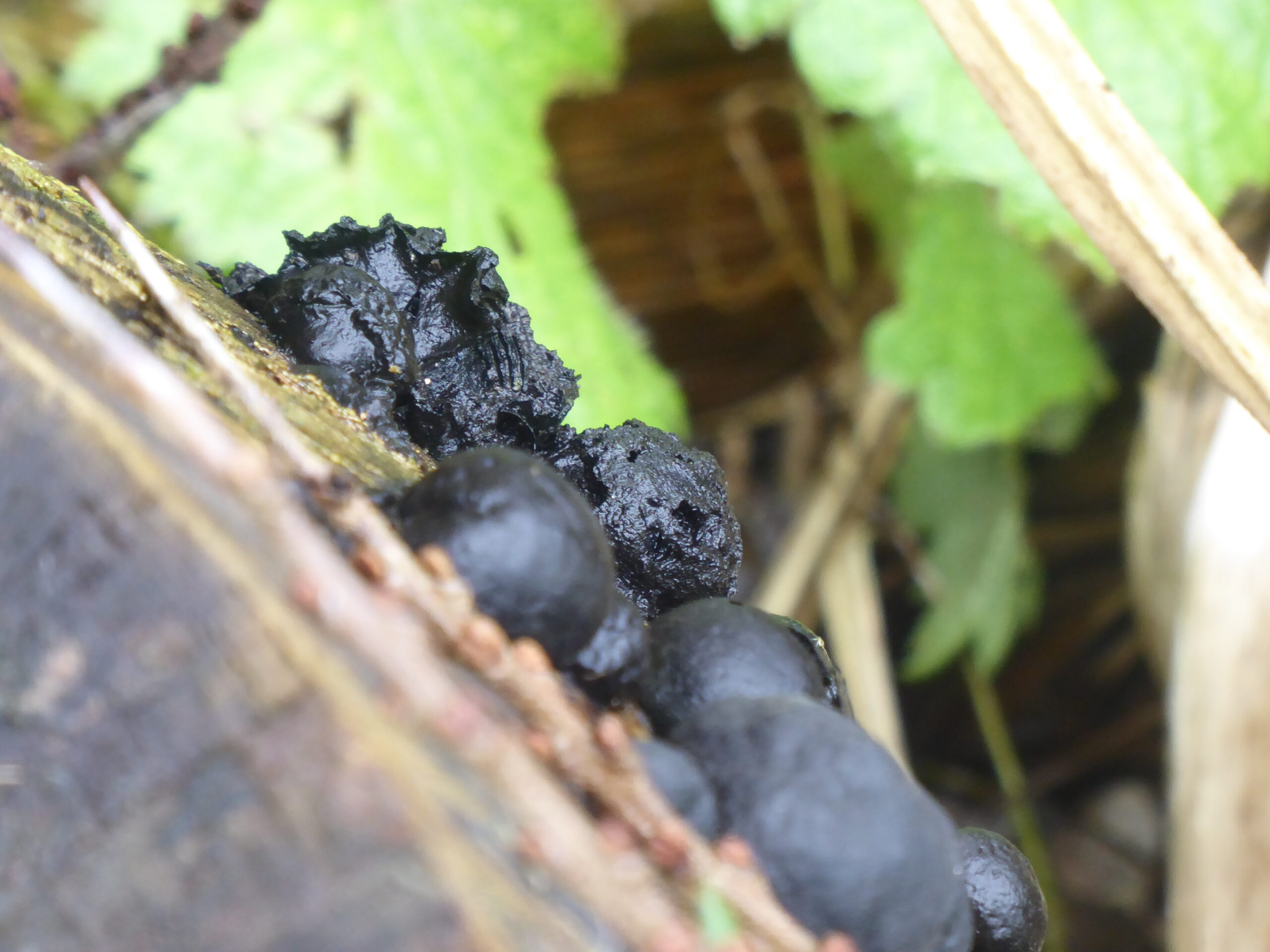
Here’s a funny one! In between showers, I popped out with my camera and found, on an old sycamore log on the ramp, this fungus that literally looks like sheep’s poo. However, it’s quite interesting because although it isn’t edible, it is hard and coal-like – hence the name – and can be harvested to use as charcoal briquettes on the barbecue apparently!
They can grow up to 10cm across and live for years. In fact, if you cut one open, it is possible to see growth rings, as on a tree. They are paler and matt when young and become black and shiny and burnt-looking as they age. They eject spores through tiny holes in the crust, which leaves black marks on the surrounding area. The outer shell cracks and can be easily damaged, giving a more textured appearance.

The caterpillar of the concealer moth is known to eat them, but mostly they provide homes for insects and small animals. They are also known as Coal Fungus, Tinder Bracket and Cramp Balls, the latter because people would carry them to protect them from cramp.
-
A Knight in the watermeadow – a Grey, Beech, or Ashen Knight (Tricholoma) Toadstool

After a few days away and the aftermath of Storm Babet, I wandered down to the watermeadow noting the muddy state of the paths and splashy fragility of Little Venice in particular. It was at the side of the steps next to the ramp that I noticed this toadstool, one of three. Its rounded cap had a slight peak on the top and a pleasing grey denim appearance and the flesh was white and fibrous. Next to it another toadstool in good condition and the third decomposed into a mess of pinky-grey gills and white flesh.
I’ve spent hours trying to identify it and as toadstools come and go so quickly, I don’t think I’m likely to find any further clues. I know this isn’t an inkcap, as clearly it would not leave a black spore-print, but a white one. That being the case, I can count it on the tally.
I asked Google Lens first of all. It told me it was either a March Mushroom (Hygrophorus marzuolus) or a Grey Knight (Tricholoma terreum). (It refused to identify the decomposed toadstool – I think it thought the amount of fleshy pink looked a bit suspect.) First, I discounted the March Mushroom, as it grows at high elevations, so we are a bit too near sea-level. I turned to my Collins guide and looked at the Tricholoma section.
The Grey Knight was a possibility, as although, like many of the Tricholoma toadstools, it likes a coniferous habitat; it will also grow near deciduous trees and is common. The cap is conical to umbonate (concave-sloped bell-shape) with mouse-grey fibres, the gills are white, turning grey and the stem is smooth white with no stem ring.
I found two other options:
The Beech Knight (Tricholoma sciodes) likes broad-leaved trees but is uncommon. The conical-umbonate cap is grey, darker in the centre with lines radiating out. They can grow up to 12 cm in diameter, which is wider than our specimins, though the decomposing one was larger. The gills are grey-white or slightly pink. The stem is quite thick and 4-8cm tall.
The Ashen Knight (Tricholoma virgatum) lives in broadleaved woodland, is widespread but uncommon, though I also read that it is “far from rare”. The flesh is grey-white, and the gills start out white and go grey-pink, as they have on the squashed one. The cap has a conical pip.
From the description, it could be the Ashen Knight, but is probably the Grey Knight, as that is more common.
Tricholoma means hairy fringe and refers to the gills, which give the cap a fringed appearance. Our specimens were too low to the ground to be able to see that.
-
Fairy Inkcap (Coprinellus disseminatus)
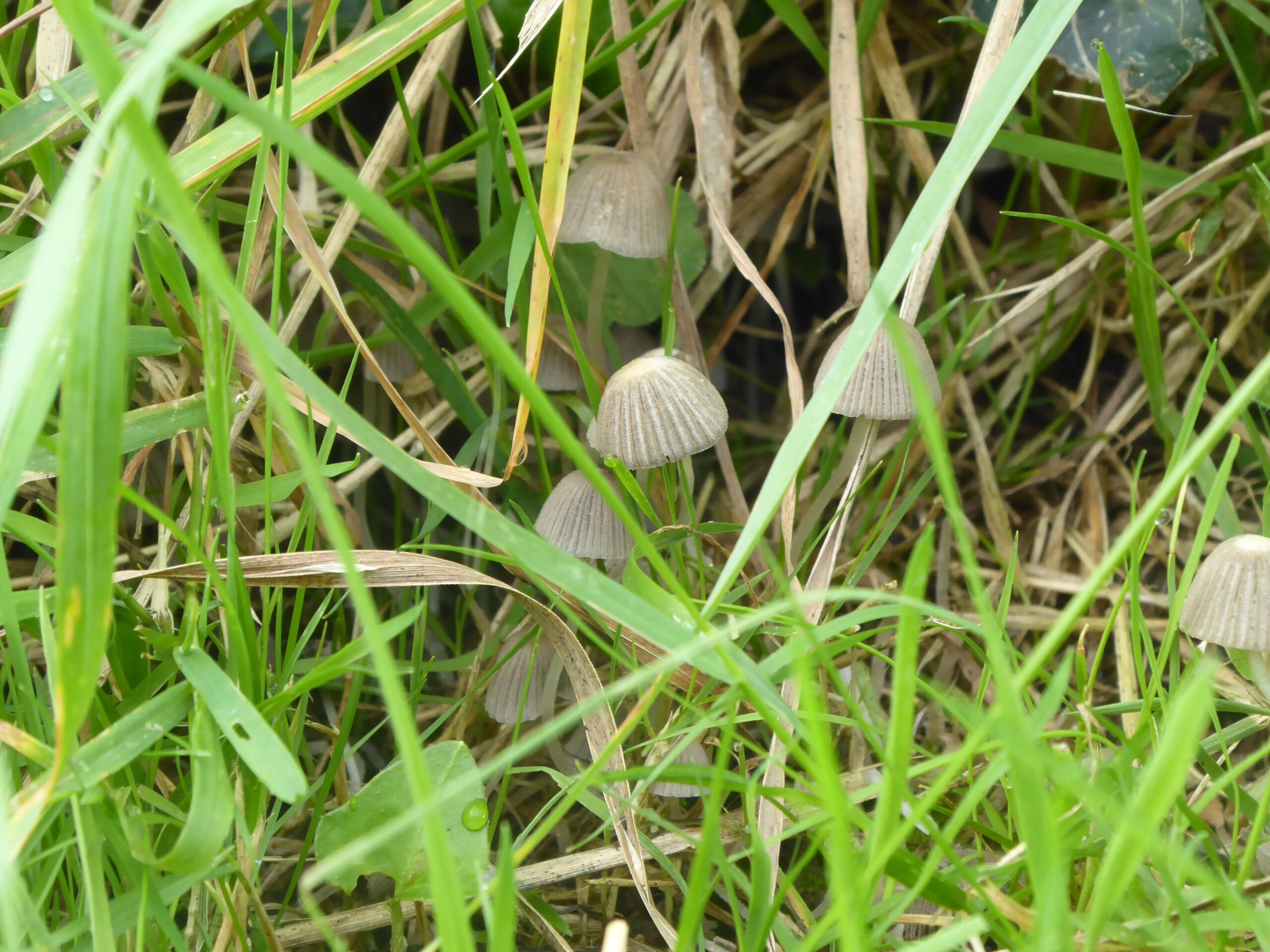
I think these are Fairy Inkcaps because they are pale, slender-stemmed, with pleated, bell-shaped caps. They grow on rotting wood, and these were near the bottom of the ramp into the watermeadow, which was constructed largely from branches, logs, and dead pampas, so there is a lot of rotten wood for them to feast on.
There is a huge number of inkcaps, all of varying shades and shapes. These are quite different from the Glistening Inkcap.
We have only a small cluster here, but if you search for ‘Fairy Inkcaps’ and select images, you will see stunning pictures of fairy inkcaps clustering in their hundreds, transforming woodland nooks into fairytale scenes.
-
Glistening Inkcap (Coprinus micaceus)
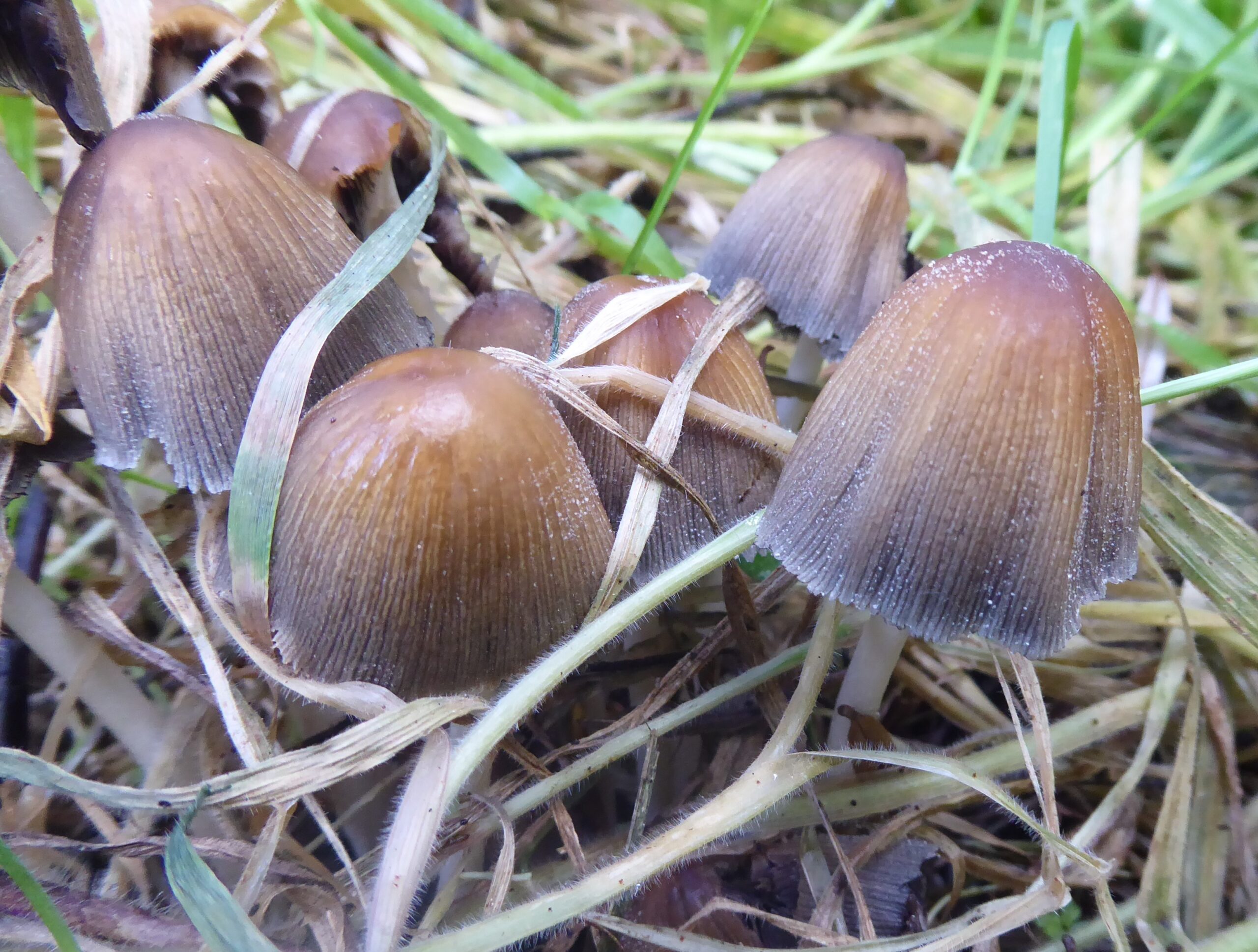
I’m so pleased that the season for fungi is here. I’ve seen two clusters of toadstools in the watermeadow but have yet to identify the other.
Also known as a mica cap because of the dusting of a mica-like substance that looks like salt crystals, the glistening inkcap is one of the easier-to-identify toadstools. The salty dusting and the tawny caps are very distinctive, as is the corrugated surface of the caps. The caps become dark grey towards the edges.
They grow in groups on decomposing wood – stumps, buried wood and logs. These were growing adjacent to a stump that we had been using as a step. These toadstools can, in fact, appear all year round.
They start off almost egg-shaped, opening out more and then the gills deliquesce, or liquify to black ink, hence the name. Glistening inkcaps are edible before deliquescence and must be cooked and eaten immediately or they will begin to liquify. I am happy to leave it to the experts.
UPDATE – I waited for the Ground Ivy to flower – but it didn’t. So, I posted the Ground Ivy anyway because the leaves, reminiscent of water lilies, were so pretty. But today I noticed that the Ground Ivy is blooming. The flowers, see below, are tiny lilac cones.

-
Beautiful Demoiselle (female)
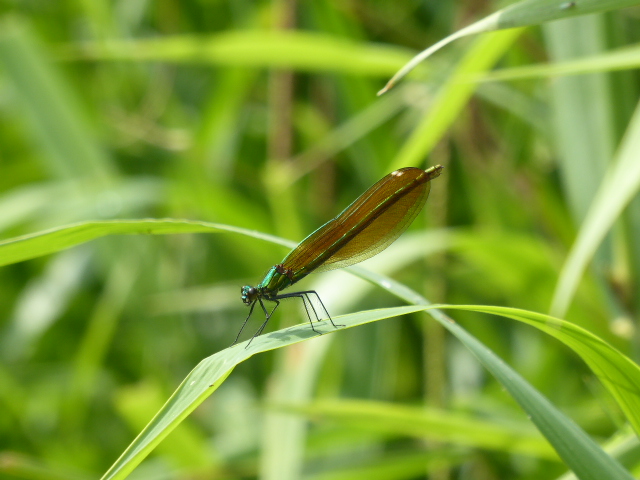
As you know, I’ve been having a lot of trouble catching flying insects and birds with my camera and of those that I have photographed there are a number of UFO’s to identify – mostly variations on housefly-type flies. So, I was delighted to capture this Beautiful Demoiselle. That is its actual name. It’s green metallic body and translucent brown wings mark it out as a female. The males have a metallic blue body and dark blue shiny wings. They are found along streams and rivers and mainly distributed in Wales and the South West.
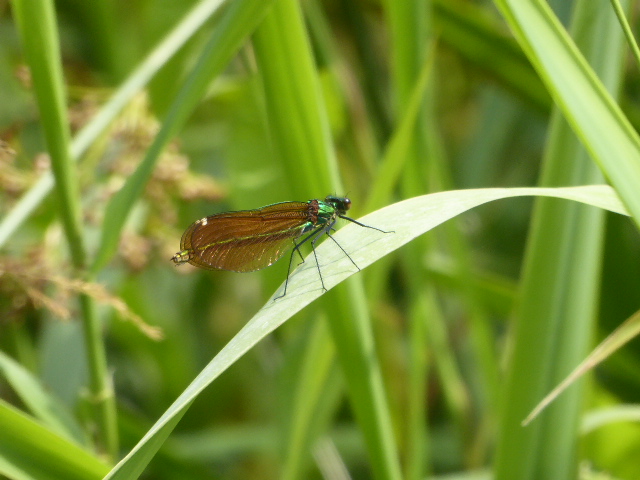
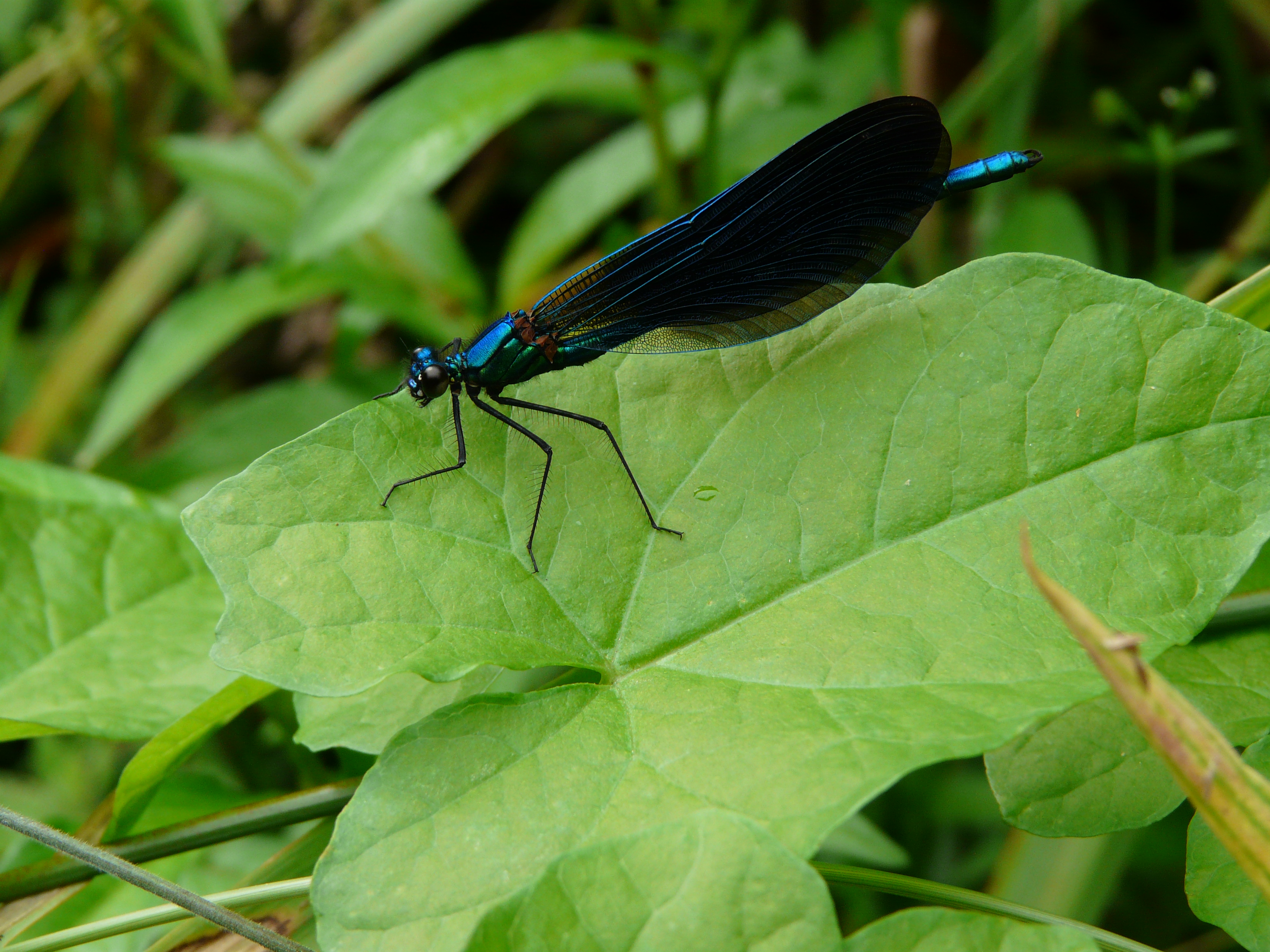
UPDATE – I managed to catch a photo of a male Beautiful Demoiselle. Quite different to the female with metallic blue body and black translucent wings.
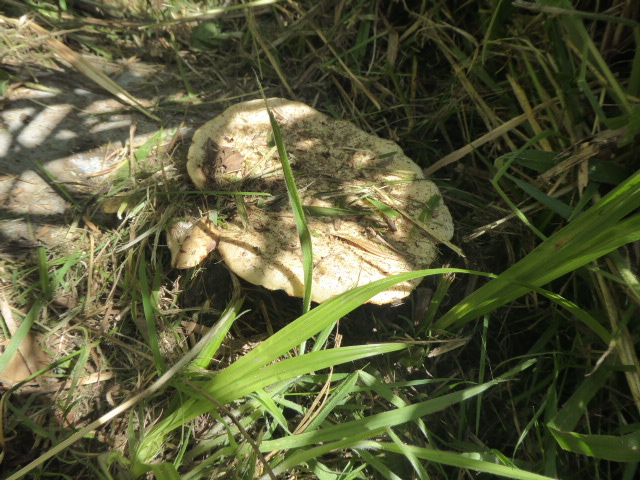
Is your toadstool instagrammable?
Well, this one clearly isn’t as its sticky top is covered with bits of grass, where I’ve been strimming the steps down into the watermeadow. I deliberated whether it would make a suitable picture and I still haven’t identified it. To be honest, I don’t know where to start with that, so it doesn’t qualify for its own post. However, I could add a generic ‘toadstools’ item to my tally to be going on with.
